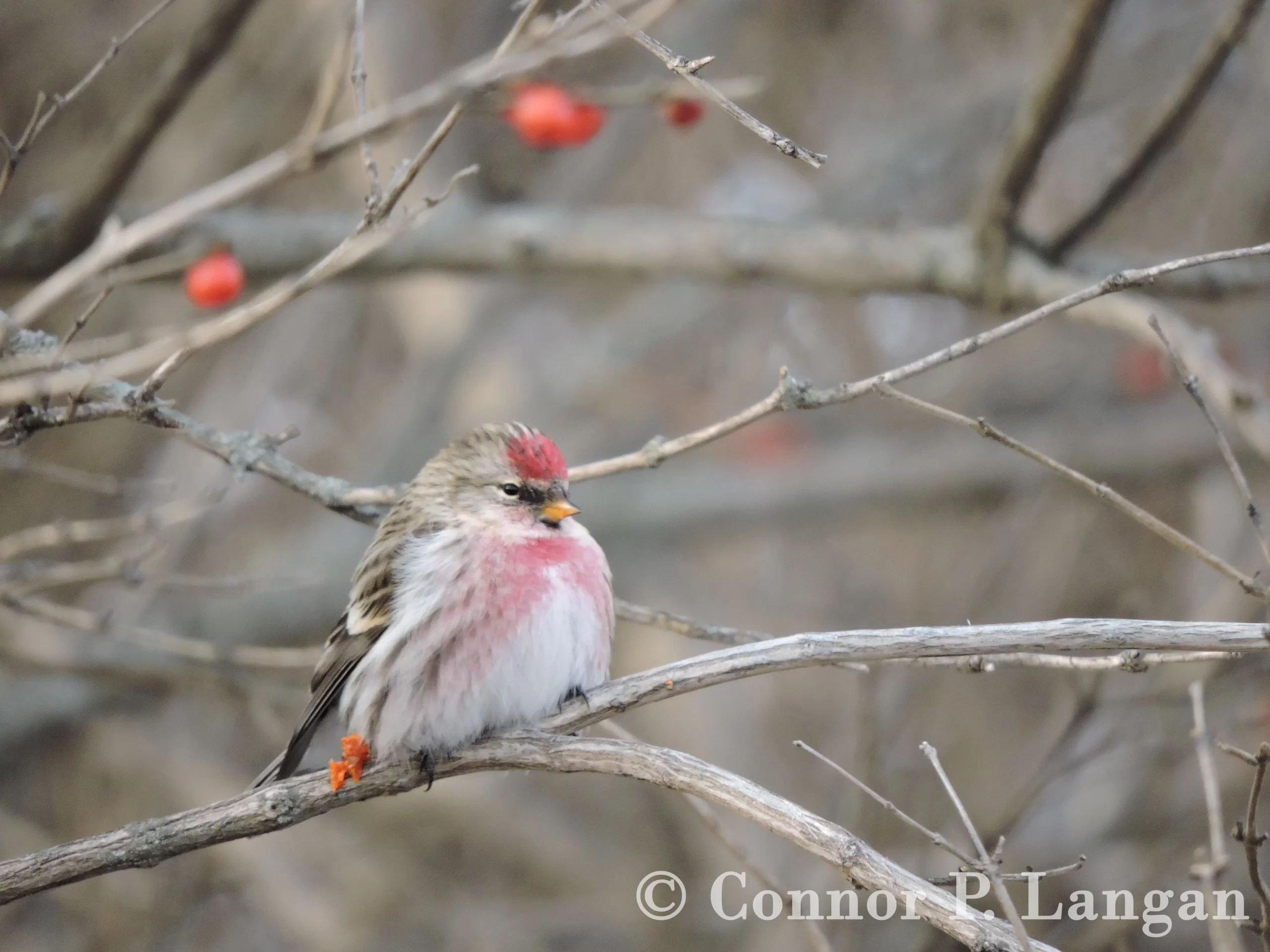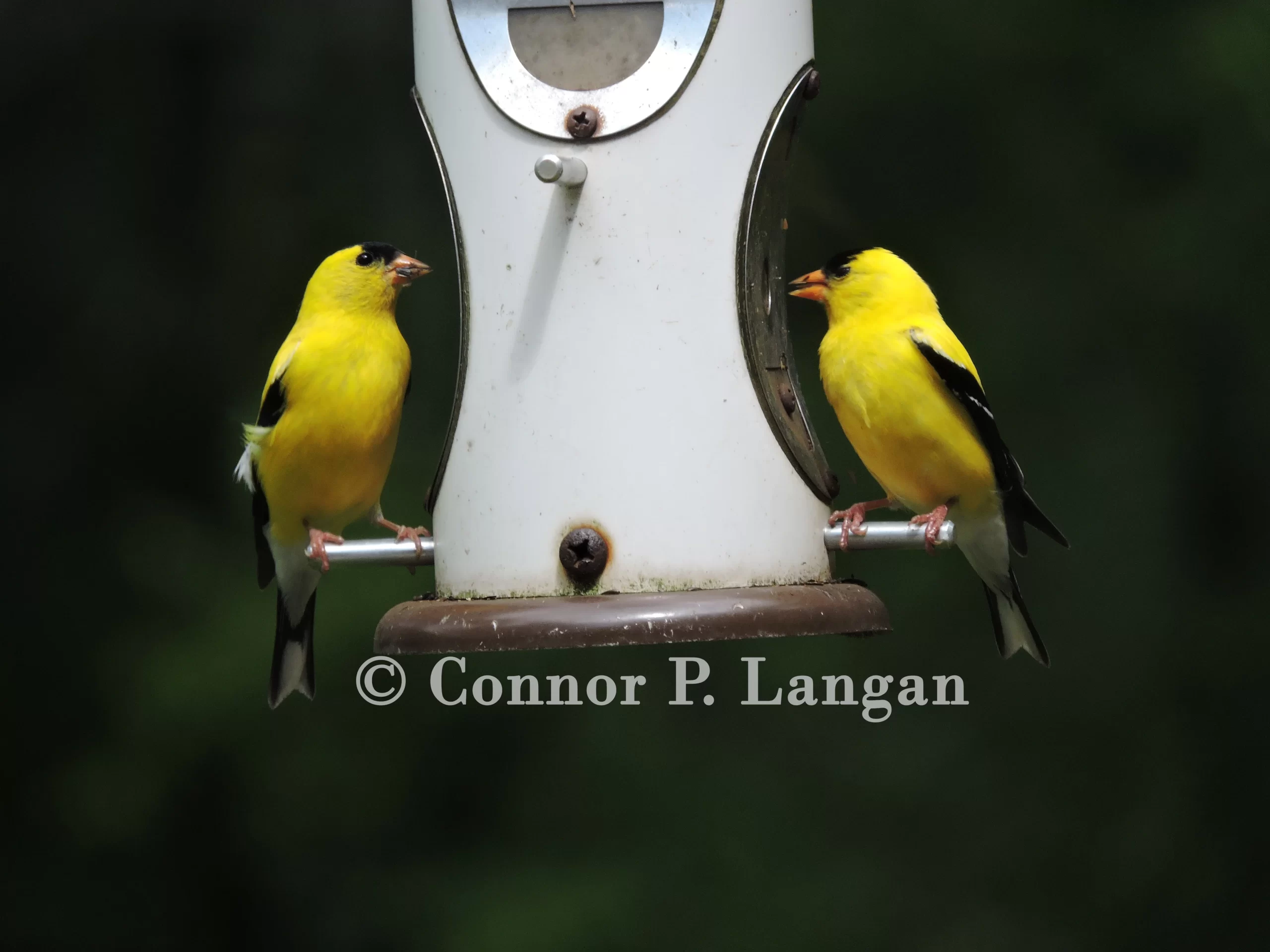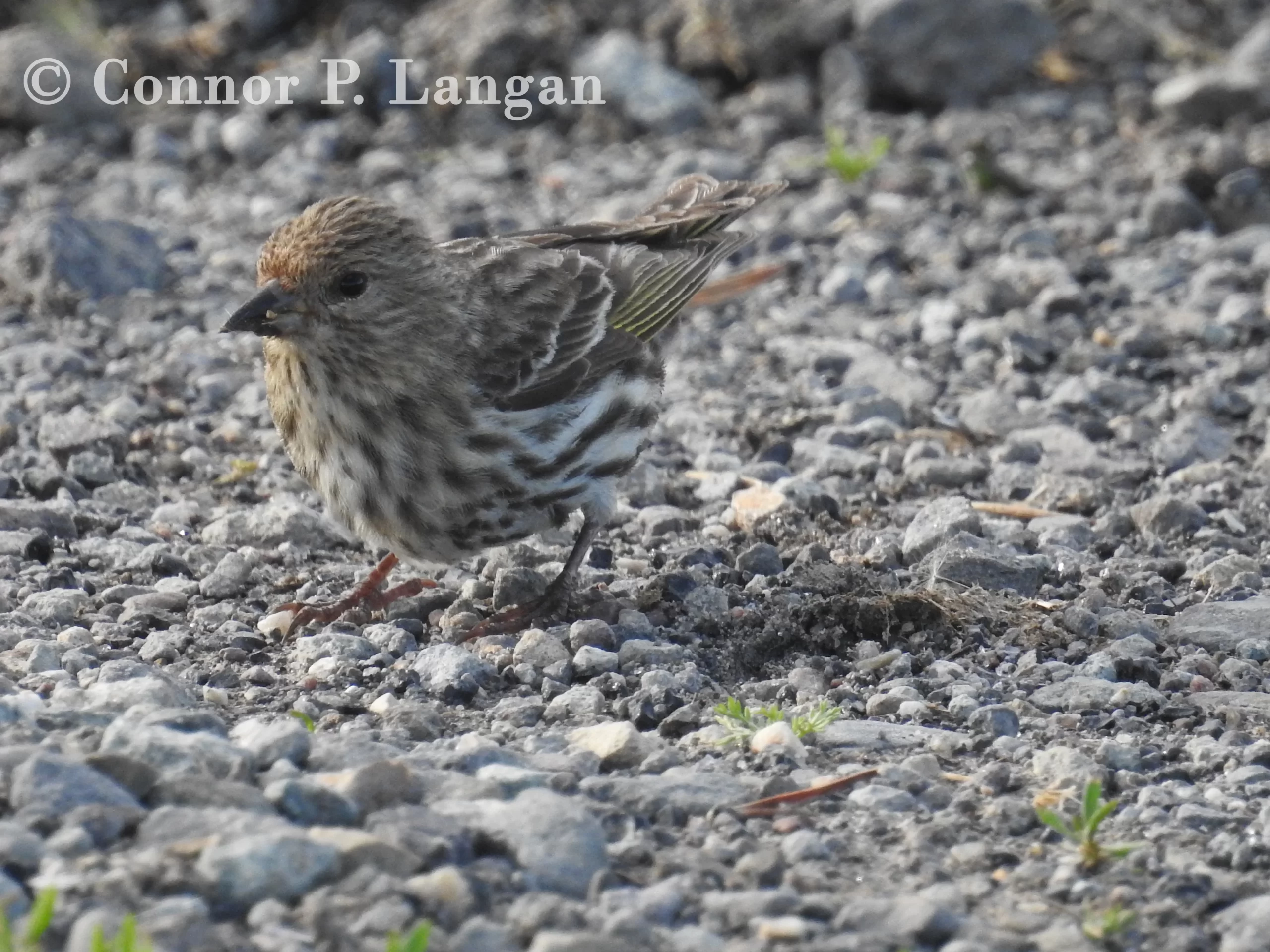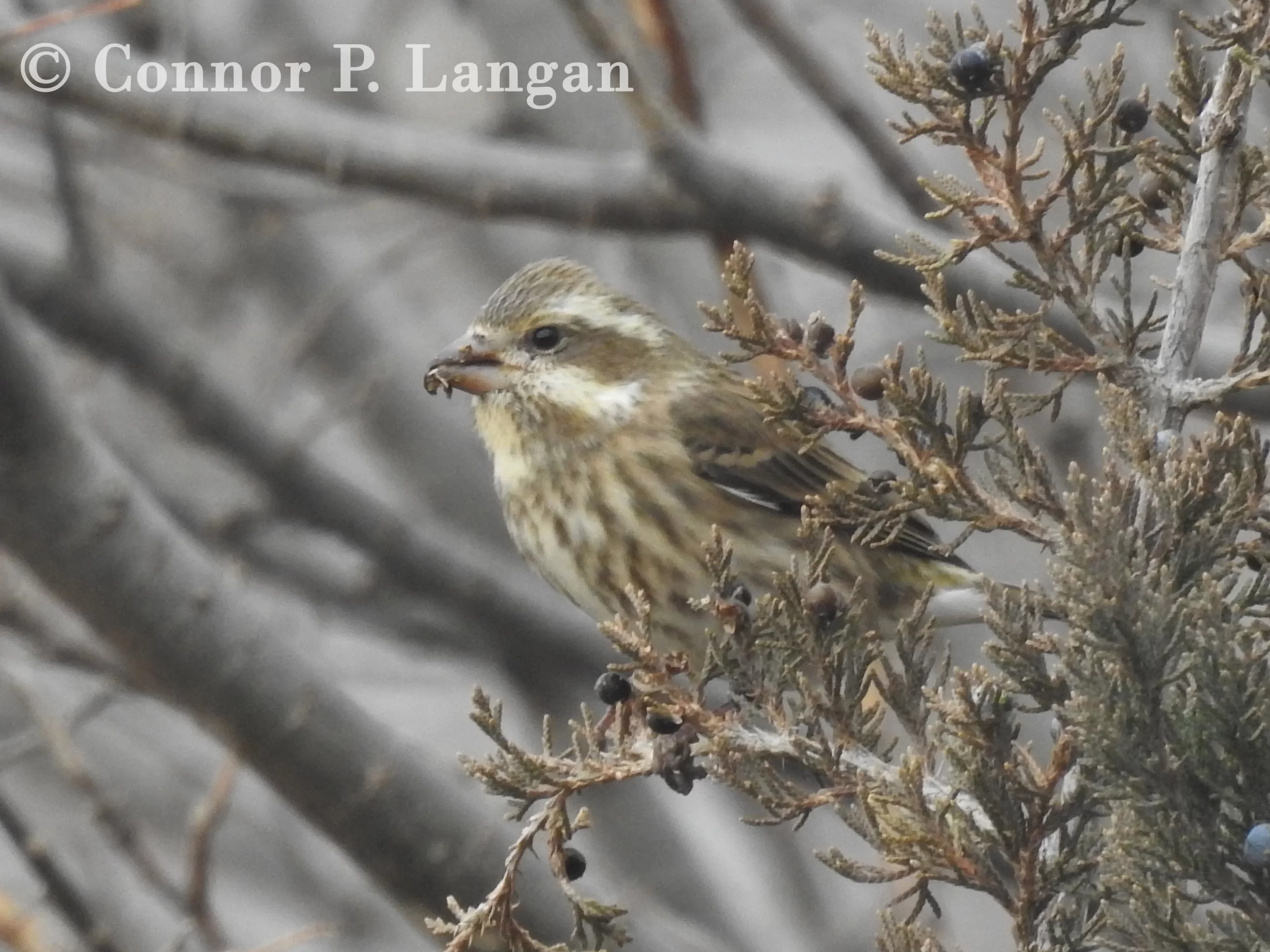Description
Common Redpolls are small finches with tiny, yellow beaks and short, notched tails. Both males and females have red forehead patches.
This species may grow to be 4.7 to 5.5 inches long, while these birds weigh 0.4 to 0.7 ounces.
Male Common Redpolls have pink chests and pale undersides that have substantial amounts of dark streaks. The backs and wings are a mottled combination of brown and white.
Female Common Redpolls lack the pink chests of males. Females have pale, streaked undersides like males, but the streaking is less extensive. The stomachs of female birds are often unstreaked and pale. The back and wing patterns of females look like those of males.
Immature Common Redpolls look similar to adult females.
Juvenile Common Redpolls look a bit different than adults, as they lack any red coloration. Juveniles are brown with substantial amounts of barred patterning.
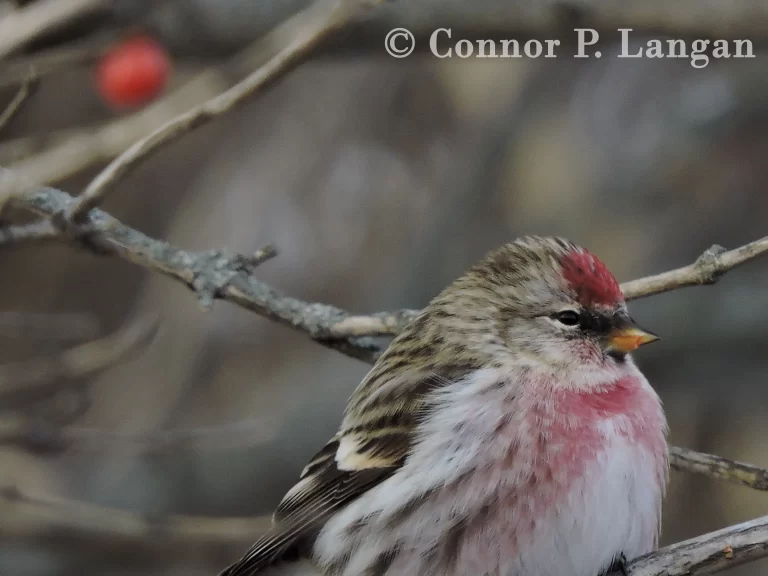
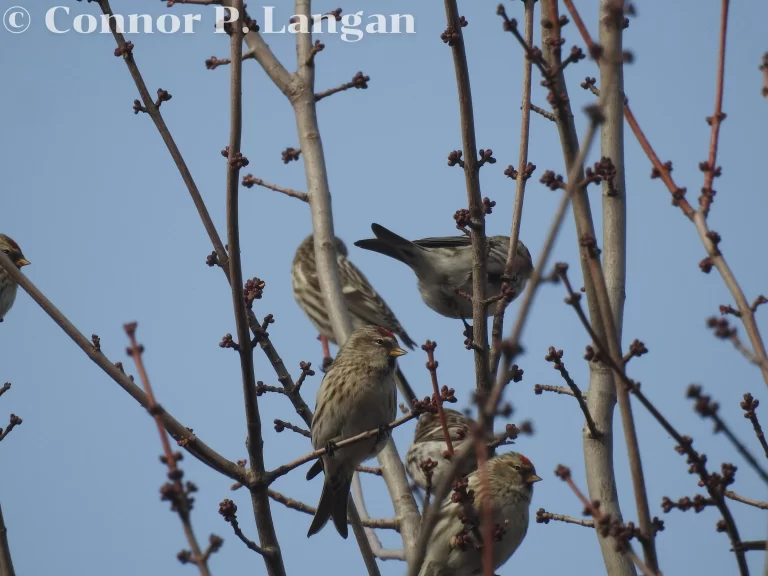
Behavior
Common Redpolls are a gregarious finch species, as they may be found in flocks at any point during the year. During the summer breeding season, flocks of Common Redpolls will be small, but flocks grow to massive sizes during the winter months as these birds travel across the landscape in search of food.
These birds are known to seek refuge in tunnels within the snowpack in the northern extents of their range, as these tunnels provide a warmer environment than the surrounding air.
Diet
Common Redpolls primarily consume seeds, though these finches will eat insects in the summer months and incorporate berries into their diets throughout the year.
The small beaks of Common Redpolls limit these finches to consuming tiny seeds. At bird feeders, thistle, millet, and nyjer seeds are a manageable size for this species.
Habitat
Common Redpolls seek out open woodlands for foraging. This species can survive in the arctic tundra despite very few trees being present in this landscape.
Common Redpolls may display irruptive behaviors whereby they travel south in search of food. In these instances, look for Common Redpolls in cemeteries, parks, fallow fields, and backyards.
Range
Common Redpolls breed in the northern reaches of Canada and Alaska where they may be year-round residents. In the winter, many Common Redpolls move south into the southern Canadian provinces and the upper United States.
During years in which food is scarce up north, Common Redpolls will move south into the Midwest and other states at similar latitudes.
Common Redpolls are also native to boreal and tundra habitats in Europe and Russia.
Breeding
Common Redpolls are seemingly monogamous by nature. Males do little to assist females with the processes of nest site selection and nest construction.
Females often build nests in coniferous trees, alder trees, or willows, though nests may also be placed on rocky outcroppings or on the ground.
Female Common Redpolls create cup-shaped nests from twigs, lichens, and grasses. Feathers, fur, lichens, and grasses may be placed in a nest’s interior.
Up to 3 broods of eggs may be laid in one year, with 2 to 7 eggs being laid per clutch. After about 11 days of incubation, the young hatch from the eggs. It takes another 9 to 16 days for nestlings to fledge.
Backyard Birding
Flocks of Common Redpolls frequently stop by backyard bird feeders to consume small seeds that are offered. Tube feeders that offer thistle are especially popular with this species.
Common Redpolls are not cavity nesters, so they will not make a nest in a birdhouse. It is unlikely that these birds will stick around and breed near your backyard, as most birds travel to nest in the arctic tundra.
Population Status
There are around 250 million Common Redpolls today. Despite this substantial population, Common Redpolls have been declining in many areas at concerning rates in the past half-century.

